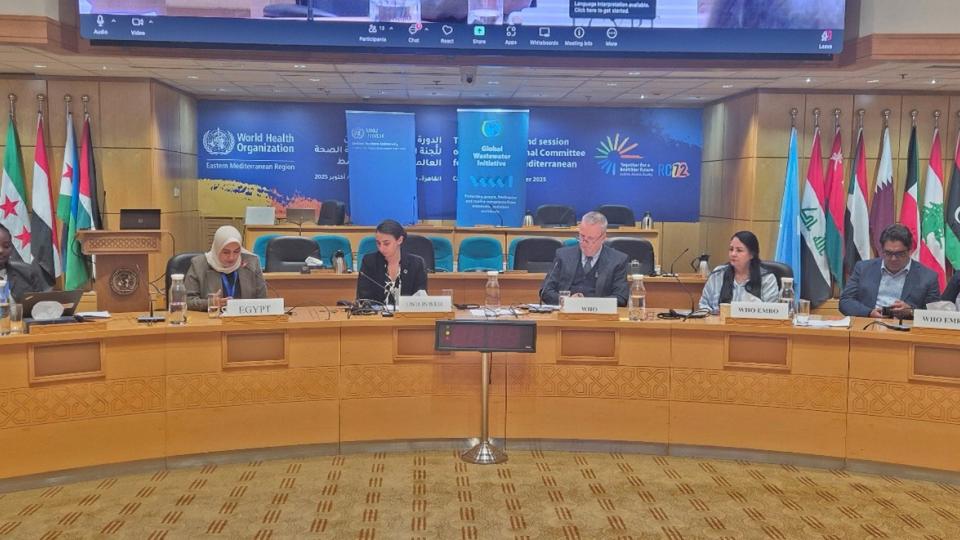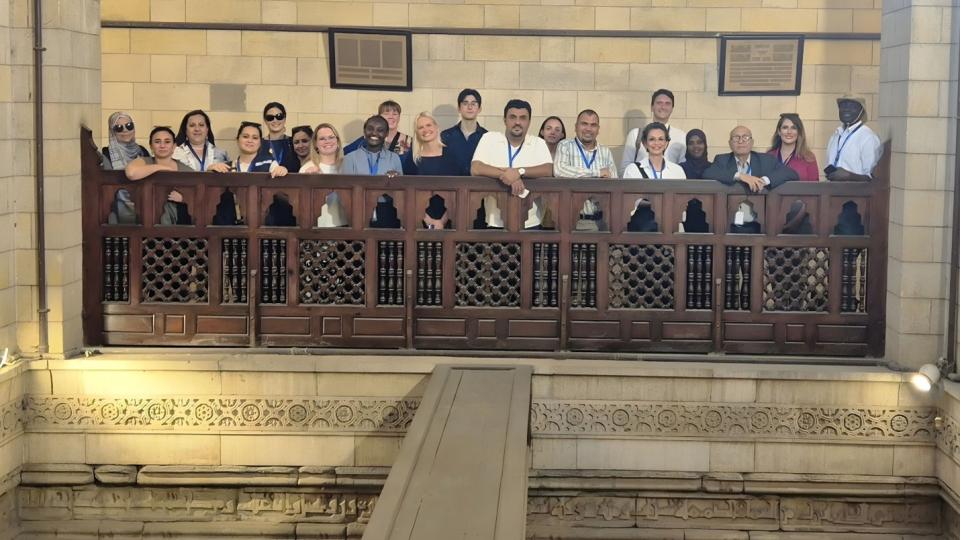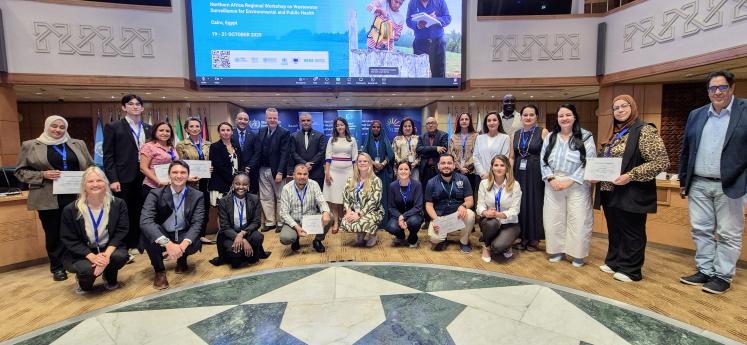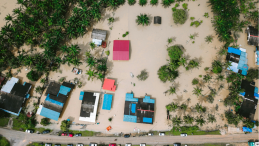Cairo, Egypt — 21 October 2025 — The United Nations University Institute for Water, Environment and Health (UNU-INWEH), in partnership with the United Nations Environment Programme (UNEP) and the World Health Organization (WHO) and its Regional Office for the Eastern Mediterranean (WHO EMRO), convened the North Africa Regional Workshop on Wastewater Surveillance for Environmental and Public Health from 19 to 21 October 2025 in Cairo, Egypt.
Held under the auspices of the UNEP initiative “Support strategies, capacity and data for global wastewater and environmental surveillance”, and supported by the European Union Health Emergency Preparedness and Response Authority (HERA), the workshop brought together experts and policymakers from Algeria, Djibouti, Egypt, Libya, Morocco, and Tunisia to strengthen regional capacity on wastewater surveillance and foster collaboration between health and environmental institutions.
Hosted by the WHO Regional Office for the Eastern Mediterranean (EMRO) with the kind participation of the Ministry of Health and Population of Egypt as the host country, the workshop explored the growing role of wastewater surveillance in protecting public health and ecosystems. The opening session featured remarks from the Ministry of Health and Population of Egypt, as well as representatives of UNU-INWEH, UNEP, WHO, WHO EMRO, WHO AFRO, the European Union Delegation to Egypt, and national partners.
Sessions throughout the workshop showcased the Wastewater Surveillance for Africa (WWS) Initiative, national case studies, and regional capacity needs. Participants discussed how wastewater and environmental surveillance can serve as a cost-effective and scalable approach to monitor health and environmental risks, while supporting UNEP’s global efforts to integrate environmental surveillance into public health systems.

Over three days, participants engaged in interactive exercises using WHO’s wastewater and environmental surveillance tools, scenario-based training sessions led by UNEP experts, and group discussions to develop a regional roadmap for wastewater surveillance in Africa. The workshop featured engaging, in-depth discussions and valuable presentations from Africa CDC, Institute Pasteur Tunis, National Research Institute for Rural Engineering, Water and Forestry (INGREF), the ODIN Project, the Islamic Development Bank, International Livestock Research Institute (ILRI - Kenya), South Africa National Institute for Disease Prevention and Control (NICD), Turkish Water Institute, and Rwanda Biomedical Centre (RBC). The programme also explored surveillance at airports, ports, and urban systems, with contributions from the European Union Joint Research Centre (EU-JRC) and the Egypt Port Training Institute and Maritime Research & Consultation Center.
The workshop concluded with discussions on country-specific planning and policy integration, where participants identified practical steps to strengthen national frameworks, laboratory capacity, and cross-sectoral coordination in wastewater surveillance.

As part of the programme, participants visited the historic Nilometer on Rhoda Island in Cairo, one of the world’s oldest water monitoring structures. The visit provided a symbolic connection between Egypt’s ancient water observation heritage and modern wastewater surveillance efforts, underscoring the enduring importance of water monitoring in sustaining human and environmental health.
By bringing together representatives from health, environment, and research sectors, the workshop advanced the One Health approach and strengthened regional dialogue toward harmonized surveillance systems capable of detecting pathogens, monitoring pollution, and informing evidence-based interventions.
Building on the momentum from Cairo, the next subregional workshop on Wastewater Surveillance for Environmental and Public Health will take place in Dakar, Senegal, in January 2026, bringing together participants from West and Central African countries to continue strengthening regional collaboration and capacity development across the continent.



